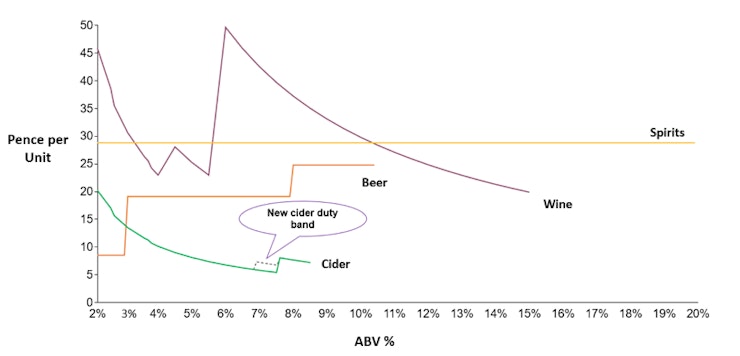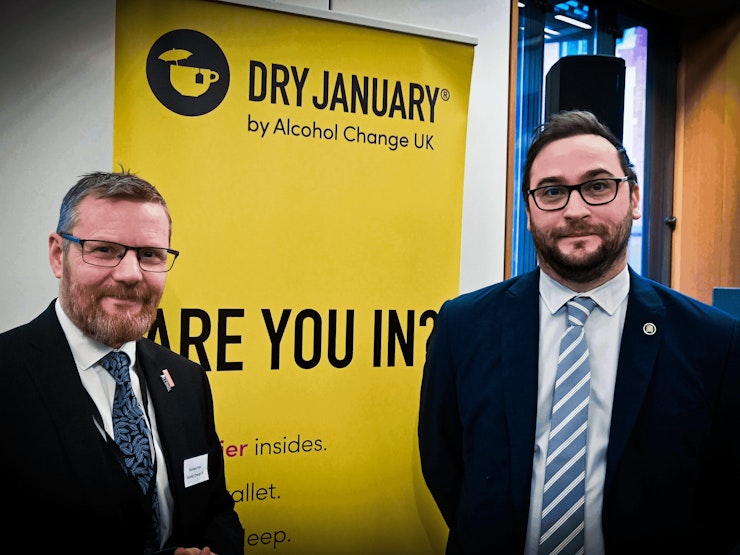The chart above demonstrates some of the problems. Focus on the cider line, and notice two things. First, that cider is taxed at a much lower rate than the other products – between a half and a third as much as beer. Second, the duty per unit of cider falls as ABV rises, so that stronger drinks are taxed less. This is because cider is taxed on the basis of volume rather than alcohol content. A litre of 4% cider and a litre of 6% cider are taxed the same, even though the latter contains 50% more alcohol.
This makes for messy charts, but that is not the real problem. These decisions have dramatic real-world consequences. For years, 7.5% cider attracted the lowest duty per unit of any product, meaning producers could sell it cheaper than anything else. They responded to that incentive by producing ciders at exactly 7.5%. Three litre bottles of cider containing the alcohol content of 22 shots of vodka are sold for less than £4.
As the cheapest products, providing the greatest ‘bang for buck’, high-strength ciders became a drink of choice for heavy and underage drinkers. Dr. Peter Rice, chair of Scottish Health Action on Alcohol Problems, has described how through the 1990s “the impact became evident in the clinic”, as “patients who had previously gone for strong lagers, switched over to these new products, known in my area as Blue Subs”. A study before minimum unit pricing came into force in Scotland found that 25% of alcohol treatment patients in Glasgow and Edinburgh drank high-strength cider, and that almost half of these cider drinkers drank it exclusively.
Mike Nicholas, formerly of the homelessness charity Thames Reach, has described high-strength cider as “murder in a can”. According to Thames Reach, 98% of people in their hostels with alcohol problems were drinking high-strength beer and cider. Of the 16 deaths in Thames Reach hostels in 2016, 10 were attributable to high-strength alcohol.
Nicholas relays the story of JK, a hostel resident. Dependent on high-strength cider, he had succeeded in reducing his drinking from a peak of 12 cans a day. His girlfriend did not make it, succumbing to an illness related to her high-strength cider habit. JK told Nicholas, “I’ve suffered both physically and mentally because of these drinks. They’re too strong. It clouds everything I do. Stay away from them. I puke for hours on end every morning. These drinks should be wiped out, taken off the shelves. They’re worse than crack. I wish my girlfriend was still here.”






